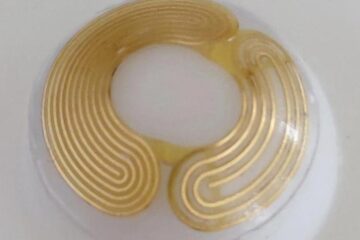Tamoxifen ameliorates symptoms of Duchenne muscular dystrophy

A new study has found that tamoxifen, a well-known breast cancer drug, can counteract some pathologic features in a mouse model of Duchenne muscular dystrophy (DMD).
At present, no treatment is known to produce long-term improvement of the symptoms in boys with DMD, a debilitating muscular disorder that is characterized by progressive muscle wasting, respiratory and cardiac impairments, paralysis, and premature death. This study will be published in the February 2013 issue of The American Journal of Pathology.
Using the mdx5Cv mouse model of DMD, investigators found that tamoxifen, given orally for more than a year, “caused remarkable improvements of muscle force and of diaphragm and cardiac structure,” according to lead author Olivier M. Dorchies, PhD, of the Department of Pharmacology, Geneva-Lausanne School of Pharmaceutical Sciences of the University of Geneva and University of Lausanne. For instance, in the heart, fibrosis was diminished by approximately 50%. In the diaphragm, the muscle of the dystrophic mouse thought to be most like that of human DMD, tamoxifen reduced fibrosis while increasing thickness as well as the number and average diameter of muscle fibers. The net effect was that tamoxifen raised the amount of contractile tissue available for respiration by 72%.
Patients with DMD show muscle degeneration, and their muscle fibers become abnormally susceptible to stress. In this animal study, tamoxifen improved the structure of leg muscles, slowed muscle contraction, increased overall muscle function, and made leg muscles more resistant to repetitive stimulation and fatigue. In fact, tamoxifen rendered dystrophic muscles even stronger than those of non-dystrophic control mice. “Our findings of a slower rate of contraction and an enhanced resistance to fatigue in muscles from tamoxifen-treated dystrophic mice are of significance for the pathophysiology of muscular dystrophy,” say the authors.
A wire test revealed that treating male mdx5Cv mice with tamoxifen for more than a year increased the whole body strength 2- to 3-fold, close to that of normal mice.
Additional findings shed light on the mechanism of tamoxifen's therapeutic actions. For example, plasma creatine kinase (CK) activity was found to be about 3 times higher in the dystrophic male mice than in the non-dystrophic males, and tamoxifen treatment normalized the CK levels of the dystrophic mice. The authors suggest that this effect is mediated by an estrogen receptor (ER) dependent mechanism. The study also reported for the first time that mouse dystrophic muscle is high in both ER á and â, and that tamoxifen raises levels of ERâ2 in particular.
Other findings, such as increased levels of calcineurin and accumulation of several structural proteins, indicate a protective effect of tamoxifen on dystrophic muscles. The authors point out that the beneficial effects of tamoxifen were seen with muscle tissue levels much lower than those reported in previous studies of normal rodents, suggesting that doses lower than those used to treat breast cancer may be effective in the treatment of DMD.
Media Contact
More Information:
http://www.elsevier.comAll latest news from the category: Health and Medicine
This subject area encompasses research and studies in the field of human medicine.
Among the wide-ranging list of topics covered here are anesthesiology, anatomy, surgery, human genetics, hygiene and environmental medicine, internal medicine, neurology, pharmacology, physiology, urology and dental medicine.
Newest articles

‘Smart’ contact lenses could someday enable wireless glaucoma detection
Most people with early-stage glaucoma don’t know they have it, even though early treatment is key to reducing vision loss. While detecting a subtle increase in eye pressure helps doctors…

New tech may lead to smaller, more powerful wireless devices
Good vibrations… What if your earbuds could do everything your smartphone can do already, except better? What sounds a bit like science fiction may actually not be so far off….

Caution, hot surface!
An international research team from the University of Jena and the Helmholtz Institute Jena are demystifying the mechanisms by which high-intensity laser pulses produce plasma on the surface of solids….





















